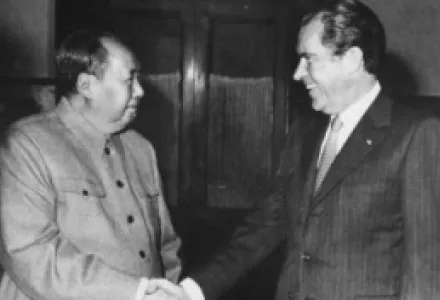Power of Structure: Explaining U.S.-China Relations during the Cold War
Many realists have argued that the United States and China had a common power interest in countering the Soviet Union during the Cold War. They argue, however, that the United States and China had had a hostile relationship mainly due to American domestic politics until the Nixon administration finally succeeded in overcoming domestic obstacles to make an alliance with China in 1972. Countering conventional domestic explanations, the speaker presents a structural explanation that U.S.-China relations before and after 1972 are explained by the power structures.


